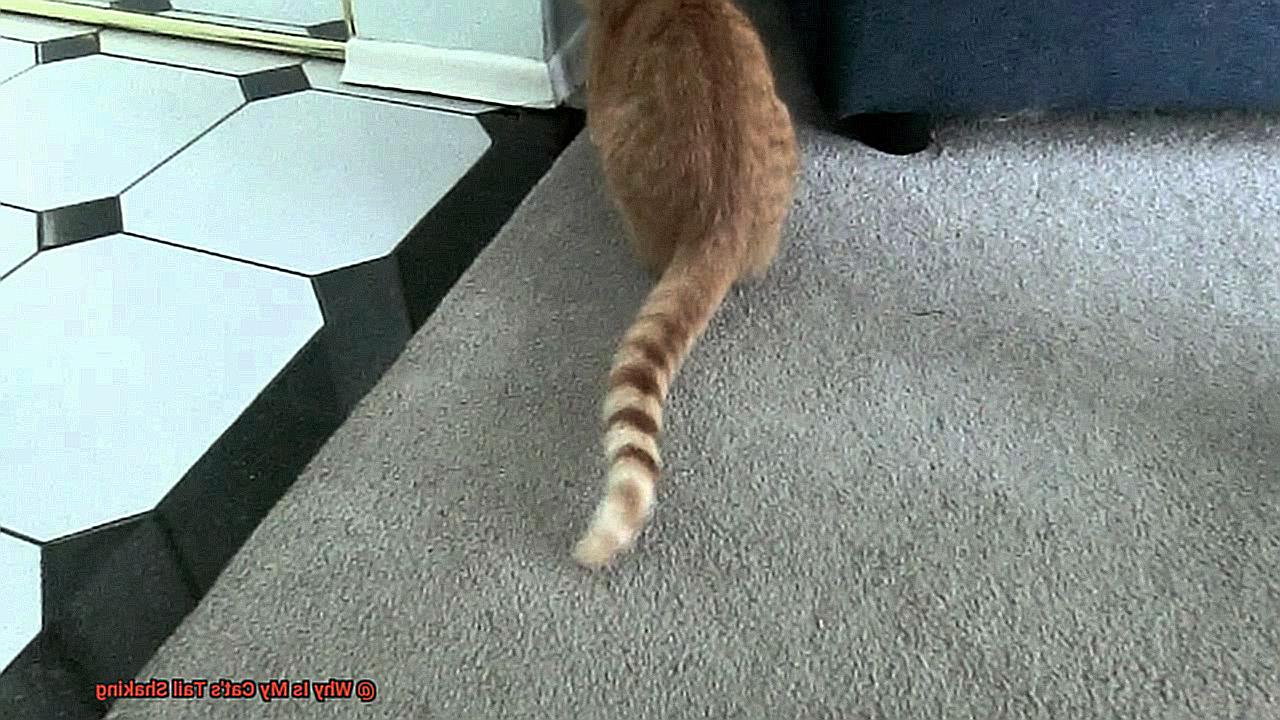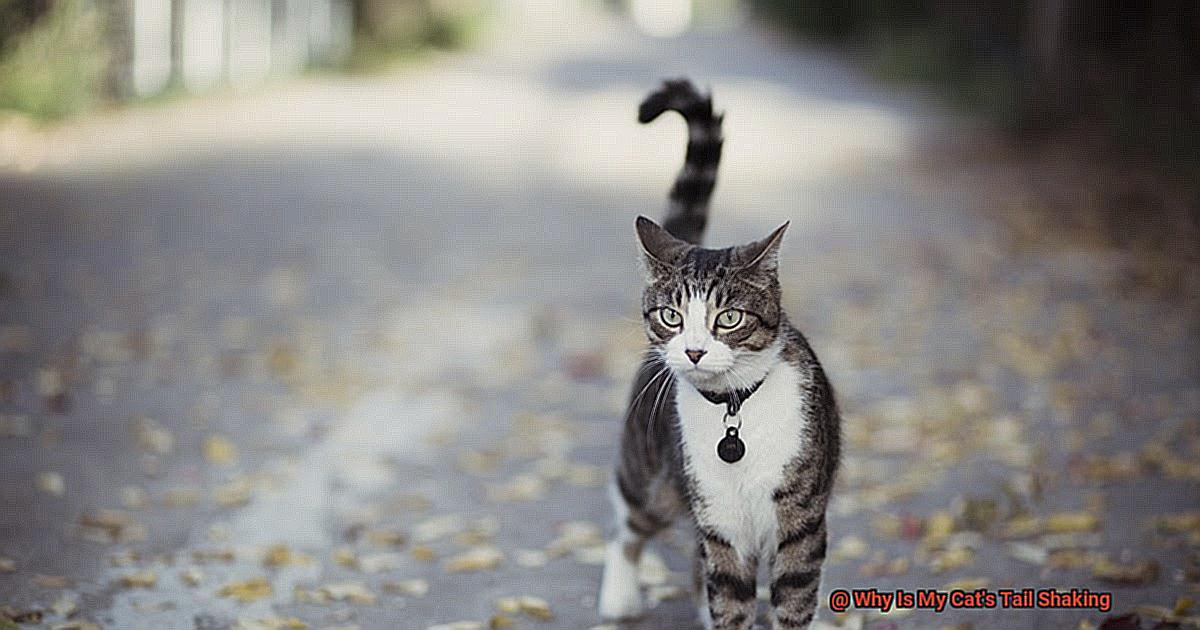Cats are intriguing creatures that have captured the hearts of many with their mysterious and unpredictable nature.
Have you ever caught your feline friend’s tail shaking or vibrating and wondered what it means? If so, you’re not alone.
While it may seem like a simple reflex action, a cat’s tail can convey a plethora of emotions and moods. The tail is an essential part of a cat’s body language, serving multiple purposes such as communication, balance, and agility.
It’s no surprise that cats use their tails to express their feelings – from fear and anger to excitement and happiness – through subtle movements. In this article, we’ll delve into the different reasons why your cat’s tail may shake or vibrate.
We will explore various emotions and situations that could trigger this behavior, including playful tail wags to aggressive displays. Our comprehensive guide to understanding your cat’s tail language will equip you with valuable insights into interpreting your furry friend’s behavior.
So let’s take a deep dive into the captivating world of cat tail shaking!
2. What Does Tail Shaking in Cats Mean?
Tail movement in cats can convey a wide range of emotions, including excitement, fear, aggression, and stress.

Understanding what your cat is trying to communicate through its tail shaking can help you become a better pet parent. Tail shaking in cats can be a sign of excitement or pleasure.
When your kitty is happy or anticipates playtime or treats, it may wag its tail from side to side. This movement is usually accompanied by other signs of excitement such as purring, kneading, or chirping.
On the other hand, cats may also shake their tails when they are experiencing fear or anxiety. If your cat encounters something unfamiliar or threatening, it may hold its tail low and shake it rapidly from side to side.
Other signs of fear or anxiety include hissing, growling, or cowering. Tail shaking can also be an indication of aggression in cats.
When a cat is ready to fight or defend its territory from intruders, it may hold its tail erect and shake it vigorously from side to side. Lastly, tail shaking in cats can be a sign of physical discomfort or pain.
If your cat is experiencing discomfort or pain in the tail area, it may shake its tail as a way to alleviate the discomfort. This behavior may be accompanied by vocalization or grooming of the affected area.
By observing your cat’s body language and behavior closely, you can become more attuned to your feline friend’s emotions and needs.

5. Fear and Anxiety
Well, fear not!
As an expert on cat behavior, I am here to tell you that your cat’s tail can be a mood barometer just like a human’s face can be. A shaking tail can be a sign of fear and anxiety, and it is essential to recognize the signs and understand what they mean.
When a cat is afraid or anxious, their body language changes, and their tail can be the first indicator. A shaking tail is often a sign that the cat is feeling stressed or overwhelmed.
This could be due to various reasons such as a new environment, unfamiliar people or animals, loud noises or even changes in their routine. Just like when we get nervous or anxious, our body language changes too.
If you notice your cat’s tail shaking or twitching, it is important to assess the situation and try to identify what may be causing the behavior. If it is due to fear or anxiety, there are steps you can take to help your cat feel more comfortable and secure.
For instance, creating a safe space for your cat to retreat where they feel calm and relaxed can work wonders. You could also use calming scents or pheromone sprays to help soothe their nerves.
However, the most important thing you can do is provide them with plenty of love and attention. It is worth noting that some cats may have a naturally twitchy tail which is not necessarily a sign of anxiety or stress.
In these cases, the tail movements may be more subtle and not as pronounced as when a cat is feeling fearful. In conclusion, understanding your cat’s body language can help you better communicate with them and provide them with the care they need.
So, next time you see your cat’s tail shaking, remember to assess the situation and provide them with the love and care they need to feel calm and relaxed.
7. Medical Conditions

Tail shaking is one of the many ways cats communicate with us.
However, it’s important to know that tail shaking could also be a sign of an underlying medical condition. Hyperesthesia syndrome is one possible medical condition that could cause tail shaking in cats.
This condition is characterized by excessive grooming, skin twitching, and tail chasing, which may result in uncontrollable tail shaking. It’s like your cat is trying to scratch an itch they can’t reach!
Another condition that could cause your cat’s tail to shake is hyperthyroidism. This condition occurs when the thyroid gland produces too much hormone, causing symptoms such as weight loss, increased appetite, and restlessness.
Sometimes, tail shaking may also be present. Feline lower urinary tract disease (FLUTD) is another medical condition that can lead to tail shaking in cats.
FLUTD affects the bladder and urethra of cats and can cause symptoms such as blood in urine, difficulty urinating, and frequent urination. If your cat is shaking their tail alongside these symptoms, it could be a sign of discomfort or pain.
However, neurological conditions such as seizures or spinal cord injuries could also lead to tail shaking in cats. These conditions require immediate veterinary attention, as they can have serious consequences for your cat’s health.
It’s important to note that medication or anesthesia can sometimes cause tail shaking in cats. If you notice your cat acting differently after receiving medication, consult with your veterinarian to determine if it’s a cause for concern.
As responsible pet owners, it’s crucial to monitor our cats’ behavior and seek veterinary care if we notice any unusual symptoms or behaviors.
***
##
Conclusion
In conclusion, a cat’s tail shaking is more than just a reflex.
It’s a crucial aspect of their body language that expresses various emotions and moods. As responsible pet owners, it’s our responsibility to comprehend what our feline friends are trying to convey through their tail movements.
By carefully observing their behavior and body language, we can become more attuned to their needs and feelings. Tail shaking in cats can indicate excitement, fear, anxiety, aggression, physical discomfort or pain.
Recognizing these signs and understanding what they mean can help us provide the necessary care for our cats. If your cat is experiencing fear or anxiety, creating a safe space where they feel at ease can do wonders.
You could also use calming scents or pheromone sprays to help soothe their nerves. Nevertheless, it’s crucial to understand that tail shaking may be an indication of an underlying medical issue such as hyperesthesia syndrome or hyperthyroidism.
Understanding your cat’s body language can help you communicate better with them and provide them with the love and care they need to feel comfortable and relaxed.

